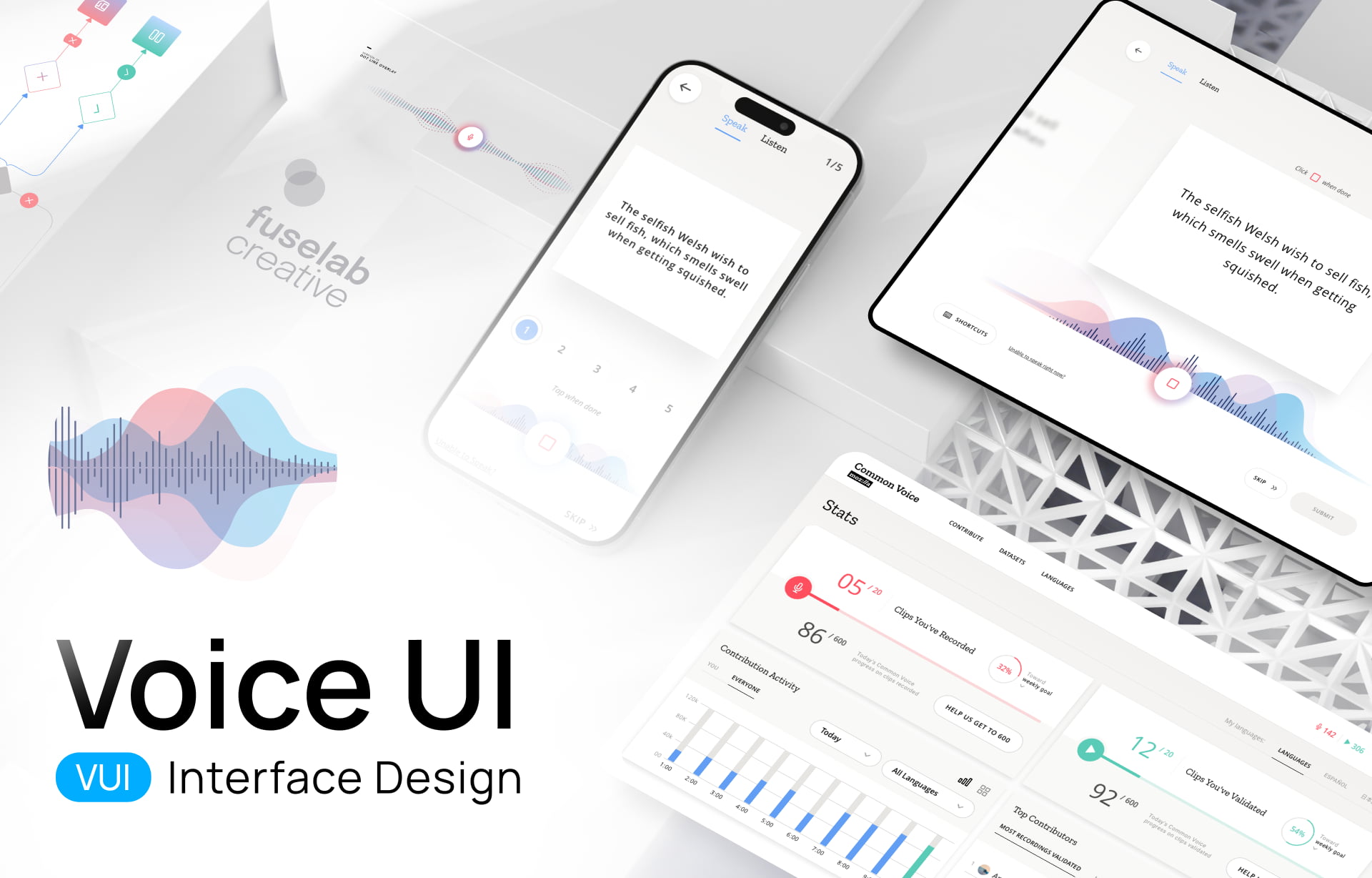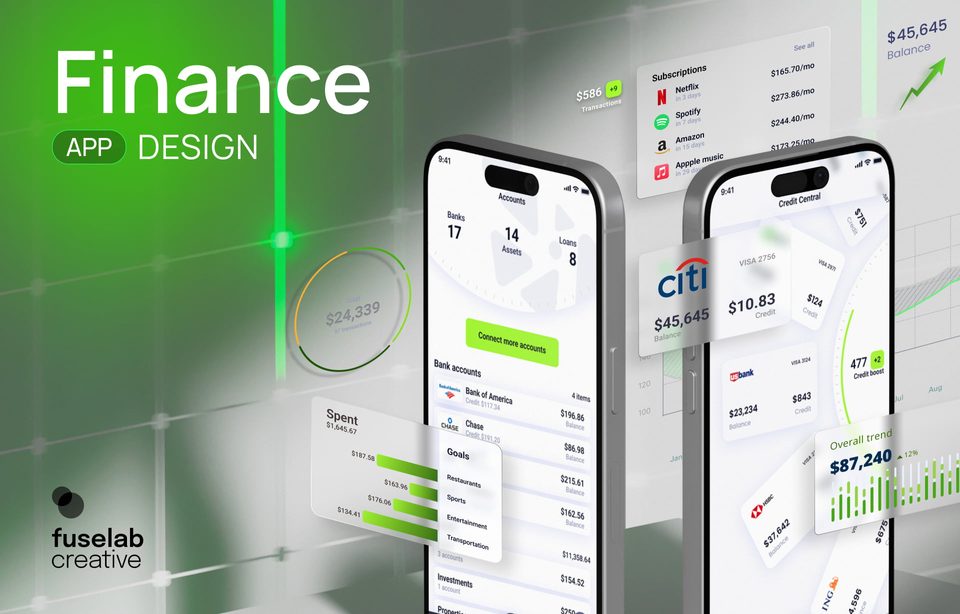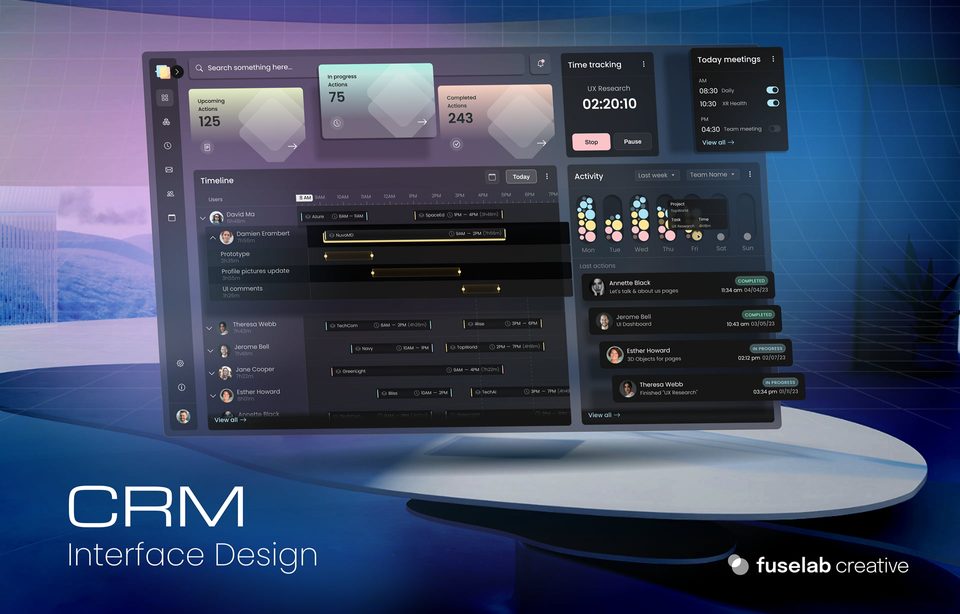The Power of Voice UI: The Next Step to Traditional User Interfaces

Stating that we live in a digital world is a cliche humdrum saying. But that does not reduce its significance and truth. Our digital age has invaded and transformed every aspect of our lives – work, study, entertainment, relationships, health, and rest. Today’s technological advancements have also fundamentally changed how businesses interact with their customers, thanks to emerging technologies like artificial intelligence, machine learning, and virtual reality.
These technologies have redefined customer experiences, making interactions more personalized, efficient, and engaging. Recent innovations have created a significant impact on enhancing accessibility, breaking down barriers for those with disabilities, and creating more inclusive digital environments.
Within this era of technological transformation, Voice UI (VUI) emerges as a powerful tool for improving both customer experience and accessibility. By enabling natural language interaction and a more intuitive, user-friendly approach, voice user interface has revolutionized human-computer interaction. Beyond traditional graphic interfaces, VUIs help users engage with devices and systems through spoken language, and this is where their USP lies. As AI and similar technologies advance, the need and prevalence of VUI will only become more widespread.
What is a Voice User Interface?
Put simply, a Voice User Interface (Voice UI) is a software application that enables users to interact with a computer or device through spoken language. Look at it as an umbrella technology, spanning other ancillary technologies such as speech recognition, natural language processing, and text-to-speech synthesis.
The primary concept and notion behind voice UI is to facilitate communication between humans and machines. As technology continues to advance across industries and use cases, the integration of voice capabilities into various applications has become increasingly prevalent.
That said, Voice UI is not a brand-new technology, nor a first-time wonder. Its history dates back to early speech recognition systems, which have significantly matured over the years to achieve higher accuracy and natural language understanding.
Much like the first versions of any technology, early speech recognition systems were rudimentary, capable of recognizing only a limited vocabulary. They often required specific accents or speaking styles and were largely confined to specialized applications. These mostly included voice dialing or simple command-and-control tasks, with low accuracy and nothing much in terms of being intuitive.
In striking contrast, voice user interface (VUI) has made significant strides. Advancements in natural language processing, machine learning, and computational power have led to systems that can understand and respond to complex language patterns, accents, and nuances. This has in turn facilitated the development of virtual assistants that are capable of engaging in multi-turn conversations, performing tasks, and learning from user interactions.
Besides, the integration of Voice UI into various devices and platforms has made it a ubiquitous technology, fundamentally transforming how people interact with technology in their daily lives.
Voice UI/UX Working, Explained
Think of voice interface technology as a massive web with several interconnected components. One of them is speech recognition technology, used to convert spoken words into text, which is then handled by natural language processing algorithms to extract meaning and intent.
Next, the system generates appropriate responses or actions based on the user’s input. It is this intricate interplay of technologies that empowers users to interact with devices seamlessly and effortlessly.
Comparing Voice UI to traditional graphical user interfaces (GUIs) reveals the distinct working and characteristics of VUI further. While GUIs rely on visual elements and user actions like clicking or typing, VUIs prioritize auditory interactions and natural language commands.
This fundamental difference impacts user experience, system design, and the overall interaction paradigm. While both interfaces offer unique advantages and limitations, it is best to consider the significance and working of each when picking the best approach for applications.
Best Practices for Voice UI Design
At the core of VUI design is a steadfast commitment to user-centric design and usability. This cornerstone guides the best practices of voice user interface design throughout:
- User’s needs and experiences must be prioritized to help designers create intuitive and efficient voice interactions.
- Thorough user research is essential to understand user goals, behaviors, and pain points. Detailed user personas and journey maps must be created to empathize with the target audience and identify opportunities for improvement.
- It is also important to ensure clear and concise prompts in this era of UI design and the quiet rise of conversational AI. The idea is to guide the user through the conversation, minimizing any confusion.
- Error messages should be informative and helpful, guiding users toward resolution and maintaining a positive user experience.
- Incorporating natural language understanding and context awareness enables the system to adapt to user needs and provide more personalized responses.
- Clear and consistent feedback is paramount to ensure the user’s understanding of the system’s response and actions.
- Users should be updated regularly about the system’s status, progress, and outcomes.
- Personalization can enhance user satisfaction by tailoring the voice experience to individual preferences and behaviors.
Exploring Voice User Interface Applications
Even in the span of only a few years, voice UI has permeated various industries, fundamentally transforming how users interact with technology.
Take for instance smart homes, where voice UI helps users control lights, thermostats, and appliances through spoken commands. The automotive sector has embraced VUI for voice navigation, entertainment, and vehicle controls, improving safety and driver focus.
Customer service has also leveraged the technology through voice assistant UI that handles queries, resolves issues and provides support, optimizing efficiency and customer satisfaction. Besides, the healthcare sector is exploring voice UI for patient data management, medical record access, and remote patient monitoring, streamlining workflows and improving patient care.
Beyond these sectors, voice UI is making inroads into banking and retail. Virtual voice chat UI can process transactions and provide personalized recommendations, enhancing operational efficiency. As the technology continues to evolve, we can anticipate an even broader adoption of voice UI across diverse domains, revolutionizing how we interact with technology.
Voice UI and Accessibility
One of the biggest standout features of Voice UI is its potential to enhance and augment accessibility for individuals with disabilities. For those with motor impairments, voice recognition UI offers an alternative input method, enabling them to interact with technology independently.
Visual impairments can also benefit from voice UI/UX design, providing auditory feedback and reducing reliance on visual cues. However, it is essential to consider accessibility throughout the design process. Clear and concise prompts, appropriate speech synthesis, and support for various accents and dialects are crucial for ensuring inclusivity.
Explore our project Mozilla which uses these core design principles to make voice recognition open, accessible, and openable to everyone. The project’s Common Voice initiative helps teach machines how real people speak.
Emerging Trends in Voice UI
Voice User Interface (VUI) is a rapidly evolving segment, driven by rapid advancements in artificial intelligence, natural language processing, and machine learning. As such, there are many exciting voice UI trends set to shape technology in the times to come.
Voice assistant UI is becoming smarter, capable of understanding complex queries, performing multiple tasks simultaneously, and adapting to individual user preferences. Fueled by the integration of large language models, the technology could soon see more natural and human-like interactions.
The expansion of voice UI into new domains and applications like consumer electronics, automotive, healthcare, and retail, is another significant trend. For example, in-care voice assistants have become imperative for driver safety and convenience, allowing them to control vehicle functions without taking their hands off the steering wheel. In healthcare, voice UI is redefining patient data management, medical transcription, and even remote patient monitoring.
As voice UI/UX design for AI/ML products becomes more pervasive, privacy and security become paramount concerns. Developers are now shifting their focus to robust security measures, including encryption, biometric authentication, and data anonymization. There is also a growing emphasis on user privacy controls for individuals to better manage their voice data and preferences.
Another significant trend gaining traction is the integration of voice UI with other emerging technologies, such as augmented reality and virtual reality. The confluence results in immersive experiences where users can interact with digital environments using voice commands. VR gaming is one such interesting application area, where VUI helps players control their characters and interact with virtual objects using voice commands.
As Voice UI continues to mature, we can expect to see even more innovative use cases emerge. The future of voice technology holds immense potential to make technology more accessible, efficient, and personalized, essentially shaping the future of human-computer interaction. Voice as UI could lead to a world where voice commands replace traditional interfaces, offering a truly hands-free experience.
Voice assistant UI would become smarter, and more context-aware, anticipating user needs and providing proactive assistance. Voice chat UI is also gaining traction in social interactions, leading to more natural and engaging conversations between users even on digital interfaces. These trends collectively point towards a future where Voice UI becomes an integral part of our daily lives, technology, and society.
Measuring Voice UI Success
Evaluating the success of a voice UI requires a comprehensive approach. Key performance indicators (KPIs) such as task success rate, time on task, and error rates can be used to assess system performance.
User satisfaction metrics, including net promoter score (NPS) and customer satisfaction (CSAT) scores, lend sharp insights into user perceptions. Qualitative feedback through user interviews and usability testing are equally invaluable for identifying areas for improvement.
By combining quantitative and qualitative data, organizations can gain a holistic understanding of voice UI performance and make data-driven decisions to optimize the user experience.
Conclusion
Voice user interfaces (VUIs) represent a paradigm shift in human-computer interaction, offering a more natural and intuitive way to engage with technology. The technology leverages speech recognition, natural language processing, and speech synthesis, essentially transforming how industries augment and enhance user experiences in their applications.
While this guide looks into voice UI definition, components, and design principles, it is important to underscore the importance of user-centered design. Voice UI plays a critical role in improving accessibility and creating inclusive voice interactions. The fast-emerging applications and emerging trends showcase voice UI’s vast potential and capabilities.
As technology continues to advance, voice UI is poised to shape and improve every aspect of our lives. Embracing its myriad possibilities is essential to meet the evolving needs of users. At Fuselab, we specialize in crafting innovative voice UI solutions that deliver tangible results while transforming cross-cutting use cases. Our team of experts can help you design, develop, and deploy voice-enabled products that resonate with your target audience. Reach out to our Software Design Service team to explore how we can bring your voice UI vision to life.

